Petricola carditoides (Conrad, 1837)Common name(s): Rock dweller, Heart rock dweller, Hearty petricolid, Nestling clam |
|
| Synonyms: Rupellaria carditoides | 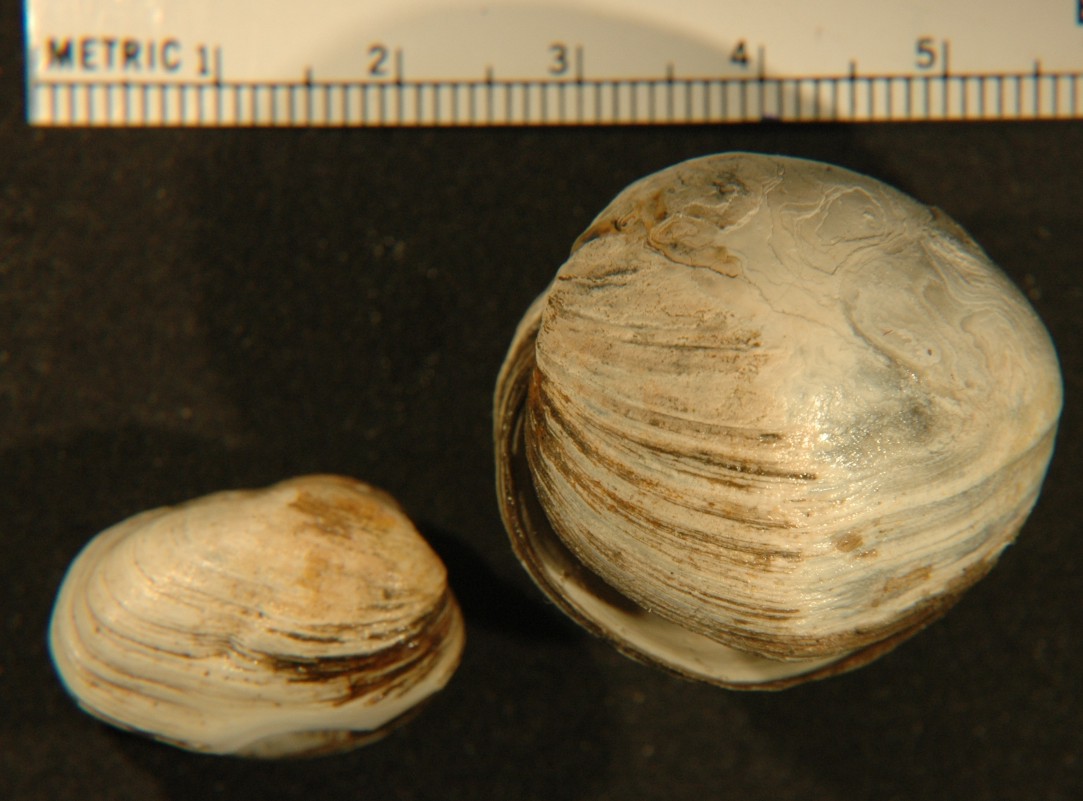 |
| Phylum Mollusca
Class Bivalvia Subclass Heterodonta Order Veneroida Family Petricolidae |
|
| Petricola carditoides shells found nestling in piddock clam holes at beach #4, Olympic Peninsula | |
| (Photo by: Dave Cowles, July 2006) | |
How to Distinguish from Similar Species: Family Pholadidae, the piddock clams, are also found in holes bored into rock but their valves are more elongated and are very different on the anterior end than on the posterior end. Petricola pholadiformis is an Atlantic species that was introduced to quiet bays (especially Willipa Bay) along with oysters. It bores in clay in a few places. It actually bores into the clay or into waterlogged wood rather than nestling in already-created holes, and its shell resembles that of a piddock clam. Its shell is more elongated and it has heavy radial sculpture. Petricola californiensis is found in southern California. Its shell is thinner and more elongate, with fine radial lines and purple-brown stains near the hinge. Hiatella arctica, also a nestler, has a thinner shell, more persistent periostracum, and bright red siphon tips.
Geographical Range: Sitka, Alaska to Baja California
Depth Range: Low intertidal to 50 m
Habitat: Nestles in cavities in rock, especially those bored by piddock clams
Biology/Natural History: Young individuals attach to the rock by byssal threads, but the adults do not. This clam secretes a fair amount of mucus.
| Return to: | |||
| Main Page | Alphabetic Index | Systematic Index | Glossary |
References:
Dichotomous Keys:Kozloff 1987, 1996
Smith and Carlton, 1975
General References:
Harbo,
1997
Johnson
and Snook, 1955
Kozloff,
1993
Morris,
1966
Morris
et al., 1980
Scientific Articles:
Web sites:
General Notes and Observations: Locations, abundances, unusual behaviors:
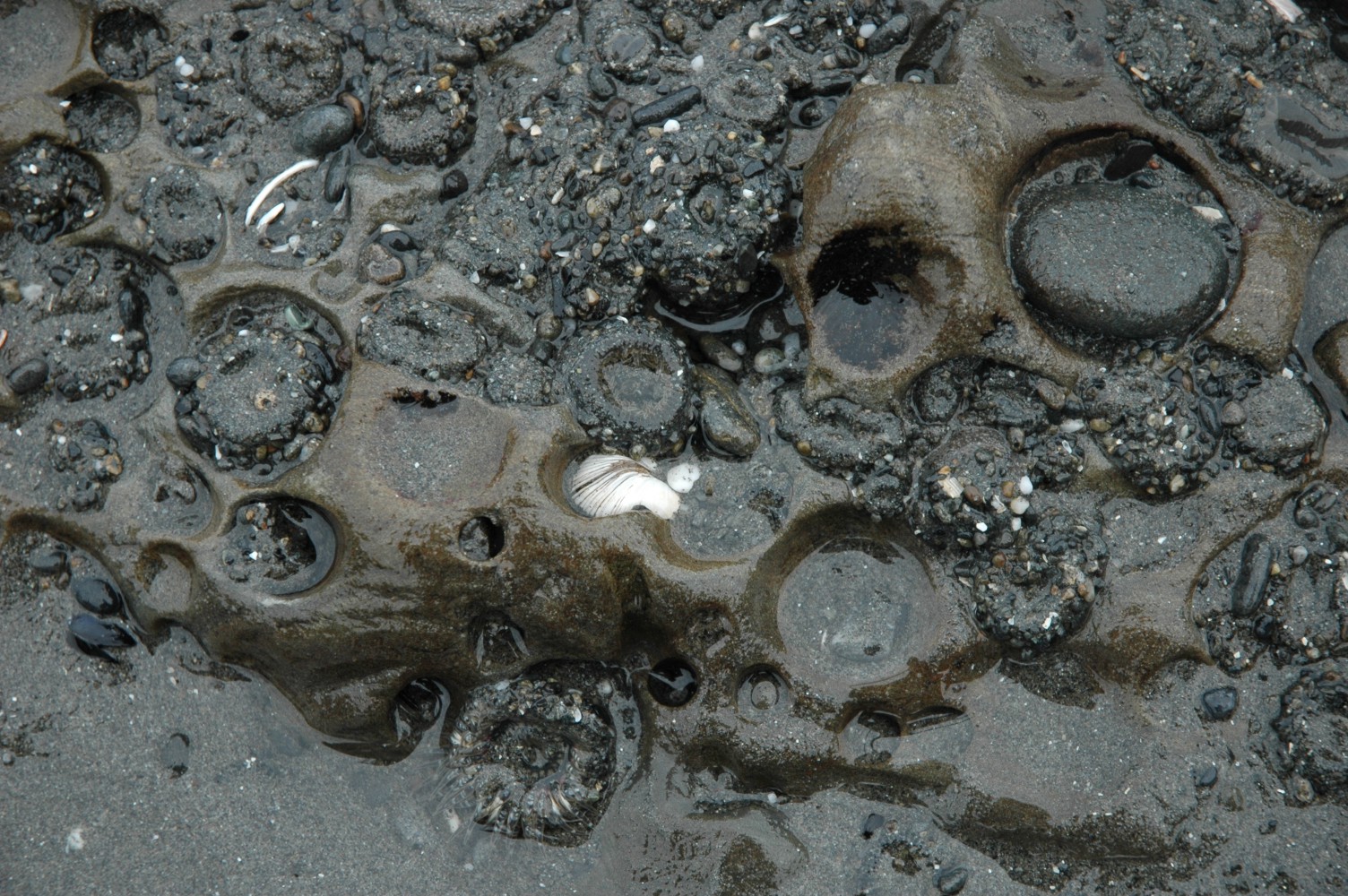
This species nestles in the holes left in shale by piddock
clams.
Several individuals are visible in this photo.
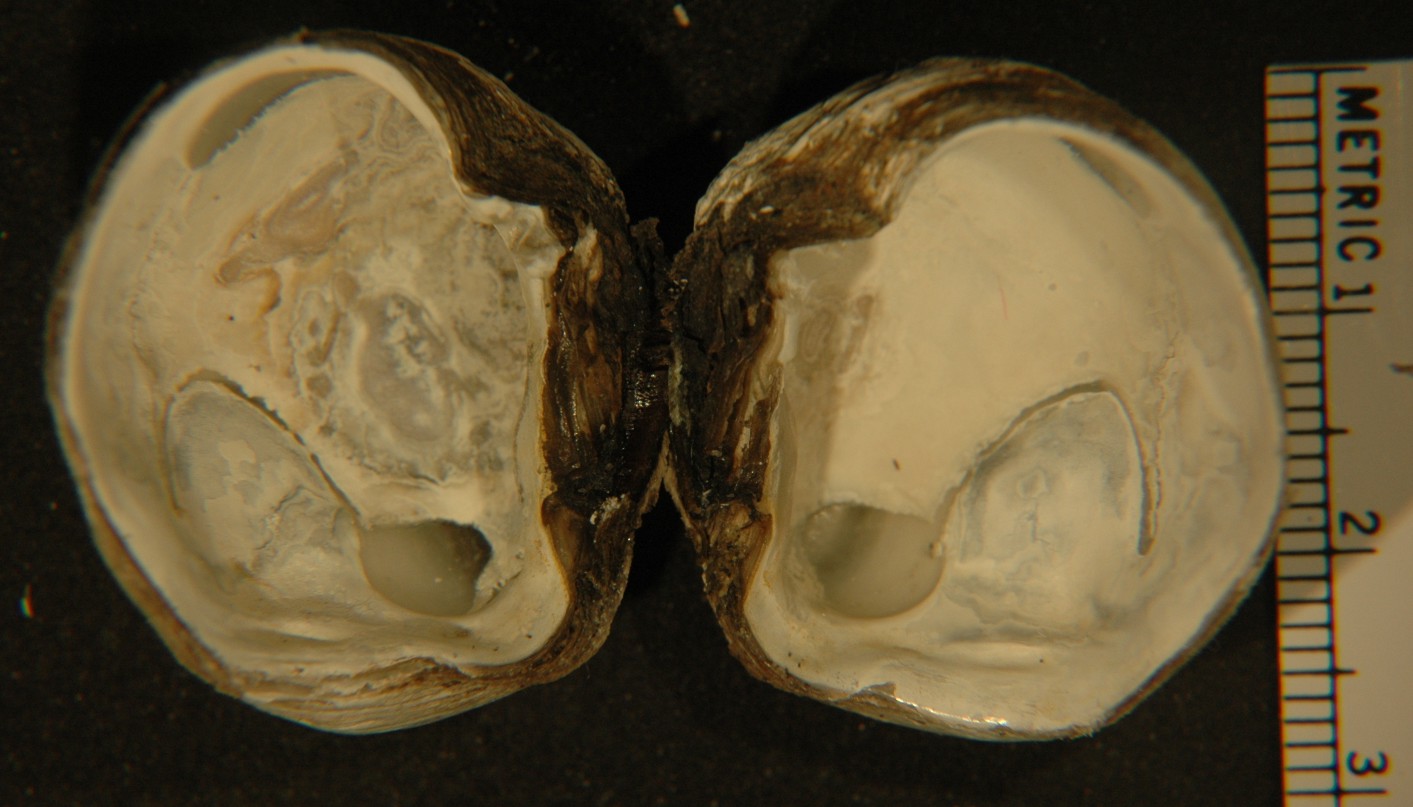
In this inside view, the anterior
end of the shell is up and posterior
is down.
The well-defined pallial
line is visible in both shells, as well as the deep pallial
sinus near the posterior
end.
Both the anterior and posterior adductor
muscle scars are visible near the hinge, with the posterior
scar most
evident.
A good deal of brown, adhering periostracum
can still be seen near the hinge of this individual.
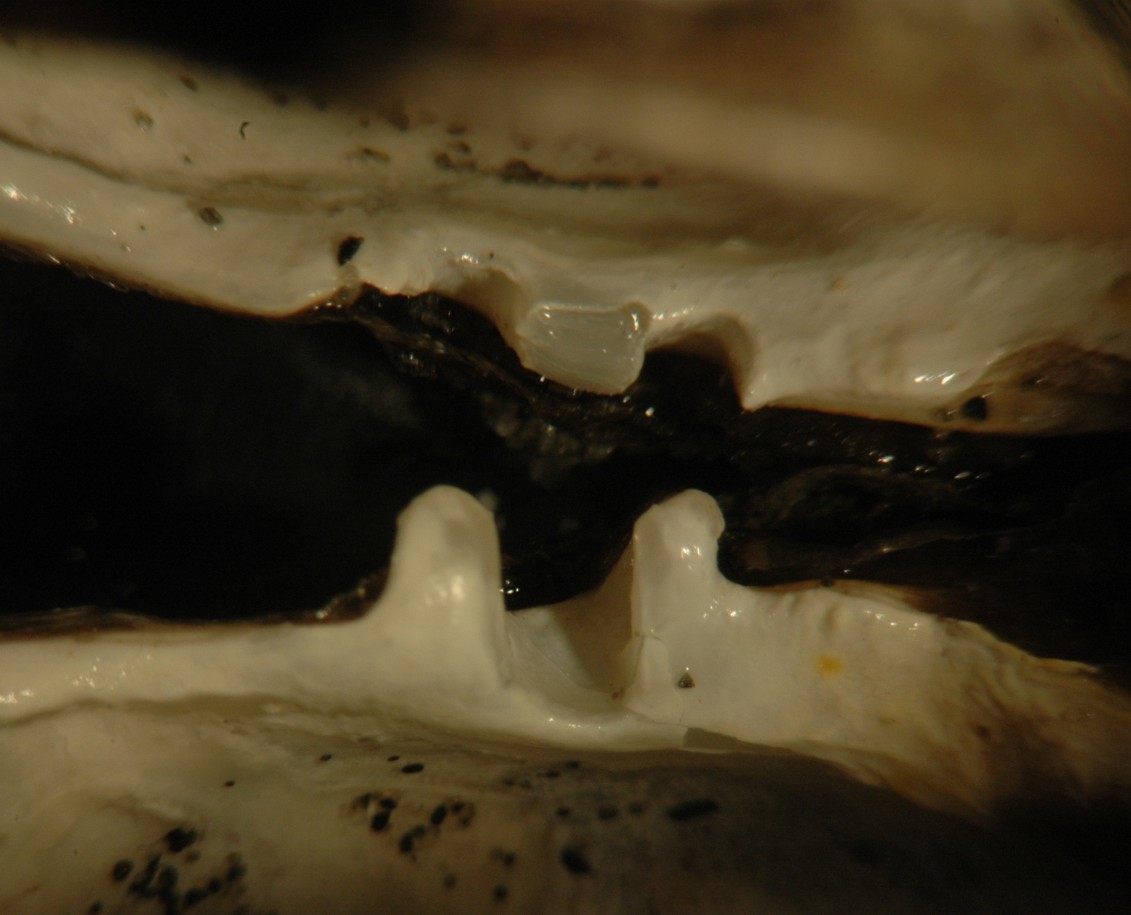
The hinge has two cardinal hinge teeth on one side and three on the
other.
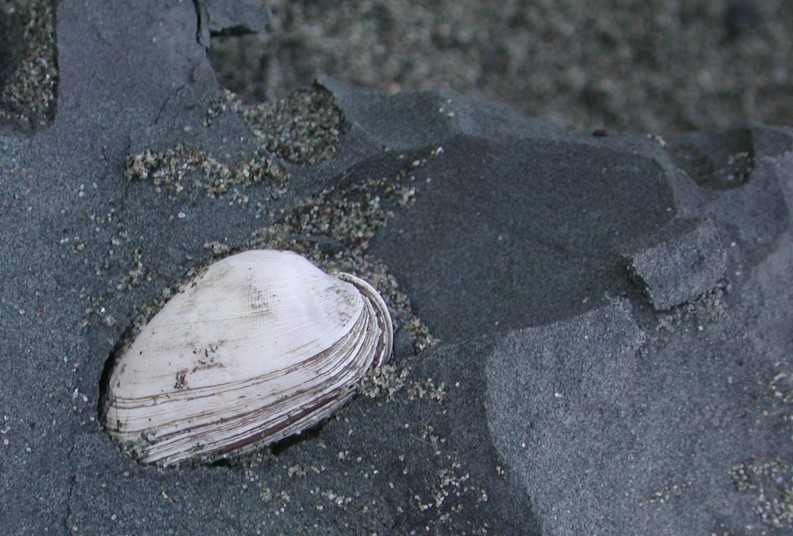
This broken piece of shale shows the clam's nestling position in an
abandoned pholadid clam burrow.
Photo at Shi Shi beach by Dave Cowles, August 2007
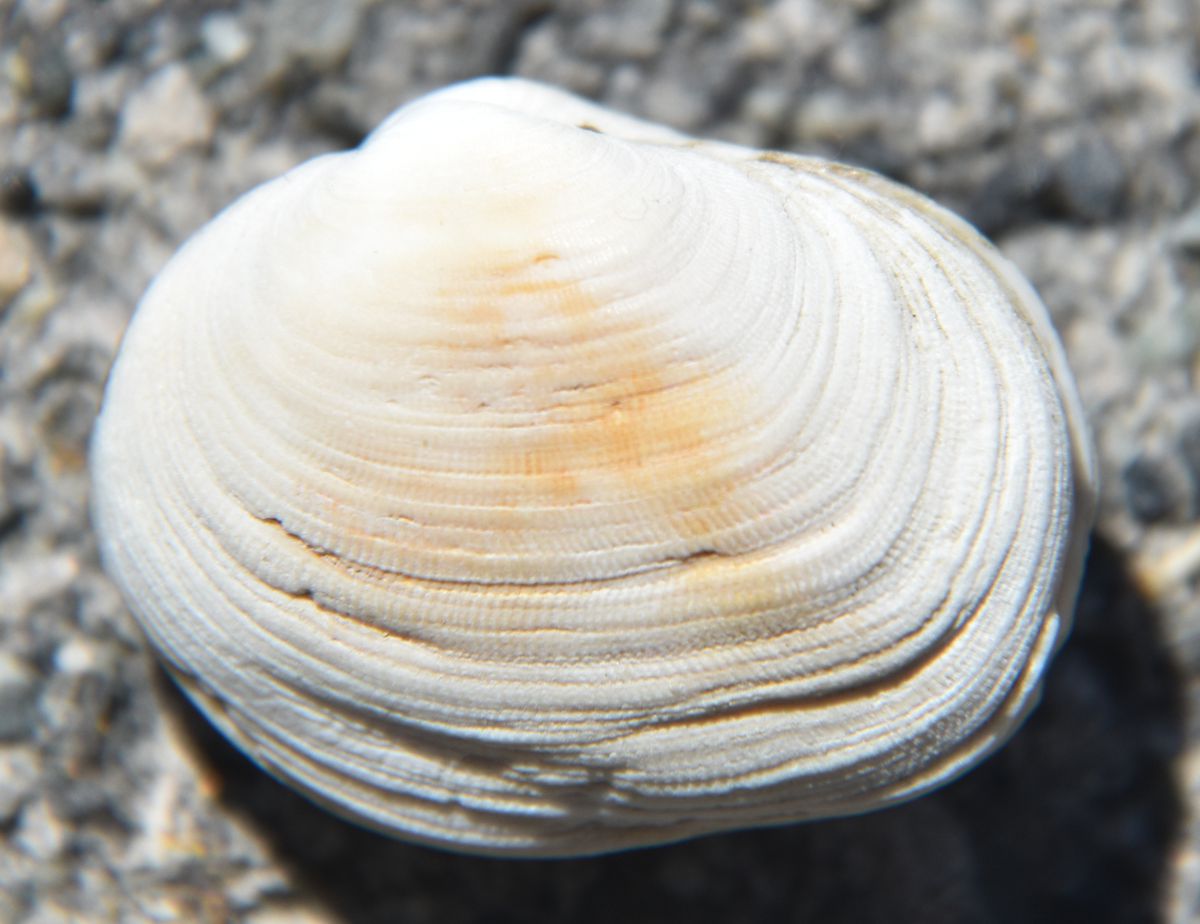
An individual 1.9 cm long found at Hole in the Wall near Rialto Beach, July 2020. Photo by Dave Cowles
Authors and Editors of Page:
Dave Cowles (2006): Created original page